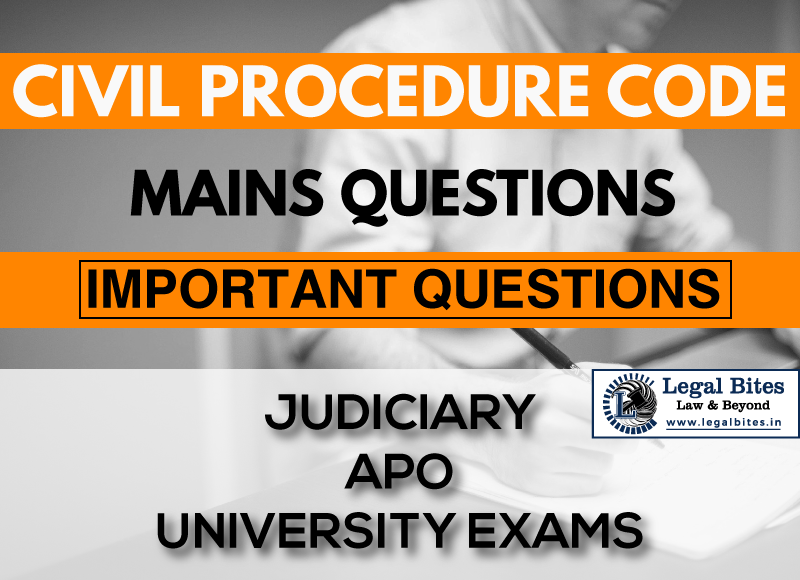What do you mean by an exparte decree? State the procedure for setting aside an ex-parte decree.
Find the answer to the mains question only on Legal Bites.

Question: What do you mean by an exparte decree? State the procedure for setting aside an ex-parte decree.Find the answer to the mains question only on Legal Bites. [What do you mean by an exparte decree? State the procedure for setting aside an ex-parte decree.]AnswerAn ex parte decree is a decree passed by the court in favour of one party in the absence of the other party, typically because the absent party failed to appear in court or failed to contest the case. It means that the judgment...
Question: What do you mean by an exparte decree? State the procedure for setting aside an ex-parte decree.
Find the answer to the mains question only on Legal Bites. [What do you mean by an exparte decree? State the procedure for setting aside an ex-parte decree.]
Answer
An ex parte decree is a decree passed by the court in favour of one party in the absence of the other party, typically because the absent party failed to appear in court or failed to contest the case. It means that the judgment or decree has been granted without giving the opportunity to the other party to present their case or defense.
Under the Code of Civil Procedure (CPC) in India, an ex parte decree can be set aside by following the procedure outlined in Order IX, Rule 13. Here are the steps involved in setting aside an ex parte decree:
1. Filing an Application: The party against whom the ex parte decree has been passed needs to file an application before the same court that issued the decree. The application should state the grounds on which the party seeks to set aside the decree.
2. Time Limit: The application to set aside an ex parte decree must be filed within 30 days from the date of the decree, or if the applicant shows sufficient cause for not appearing when the decree was passed, within 30 days from the date of knowledge of the decree.
3. Sufficient Cause: The applicant must demonstrate sufficient cause for their failure to appear in court when the case was heard. They need to provide reasons or circumstances that prevented them from attending court proceedings.
4. Merits of the Case: The court will examine the merits of the case and consider whether there are grounds to set aside the ex parte decree. The applicant must show that they have a good defense or a valid reason to contest the case.
5. Notice to Opposite Party: After receiving the application, the court will issue a notice to the opposite party, informing them about the application to set aside the ex parte decree. The opposite party will have an opportunity to present their arguments or objections.
6. Hearing: The court will conduct a hearing to consider the application and the objections, if any, raised by the opposite party. Both parties will be given an opportunity to present their arguments and evidence.
7. Decision: Based on the evidence and arguments presented, the court will decide whether to set aside the ex parte decree or uphold it. The court will consider factors such as sufficient cause, merits of the case, and interests of justice.
If the court finds merit in the application and sufficient cause for setting aside the ex parte decree, it may set it aside and allow the case to proceed further as if the decree had not been passed.
Important Mains Questions Series for Judiciary, APO & University Exams
- CPC Mains Questions Series: Important Questions Part – I of X
- CPC Mains Questions Series: Important Questions Part – II of X
- CPC Mains Questions Series: Important Questions Part – III of X
- CPC Mains Questions Series: Important Questions Part – IV of X
- CPC Mains Questions Series: Important Questions Part – V of X
- CPC Mains Questions Series: Important Questions Part – VI of X
- CPC Mains Questions Series: Important Questions Part – VII of X
- CPC Mains Questions Series: Important Questions Part – VIII of X
- CPC Mains Questions Series: Important Questions Part – IX of X
- CPC Mains Questions Series: Important Questions Part – X of X

Mayank Shekhar
Mayank is an alumnus of the prestigious Faculty of Law, Delhi University. Under his leadership, Legal Bites has been researching and developing resources through blogging, educational resources, competitions, and seminars.
